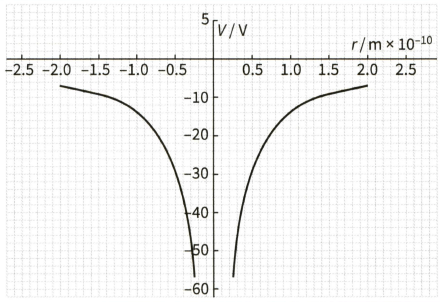An -particle emitted in the radioactive decay of radium has a kinetic energy of . Calculate the potential difference that an -particle, initially at rest, would have to be accelerated through to gain this energy.

Important Questions on Coulomb's Law
An -particle emitted in the radioactive decay of radium has a kinetic energy of . Calculate the speed of the a-particle at this kinetic energy.
An -particle emitted in the radioactive decay of radium has a kinetic energy of .
(b) This diagram shows the path of an -particle of this energy as it approaches a gold nucleus head-on.

(i) State the speed of the -particle at its point of closest approach to the gold nucleus.
An -particle emitted in the radioactive decay of radium has a kinetic energy of .
(b) This diagram shows the path of an -particle of this energy as it approaches a gold nucleus head-on.

(ii) Write down the kinetic energy of the -particle at this point.
An -particle emitted in the radioactive decay of radium has a kinetic energy of .
(b) This diagram shows the path of an -particle of this energy as it approaches a gold nucleus head-on.

(iii) Write down the potential energy of the -particle at this point.
An -particle emitted in the radioactive decay of radium has a kinetic energy of . Show that the -particle will reach a distance of from the centre of the gold nucleus.
An -particle emitted in the radioactive decay of radium has a kinetic energy of .
(d) Suggest and explain what this information tells us about the gold nucleus.
(Mass of an -particle ; charge on an -particle ; charge on a gold nucleus .)
This graph shows the electrical potential near an antiproton.

(i) Determine the potential at a distance from the antiproton.
